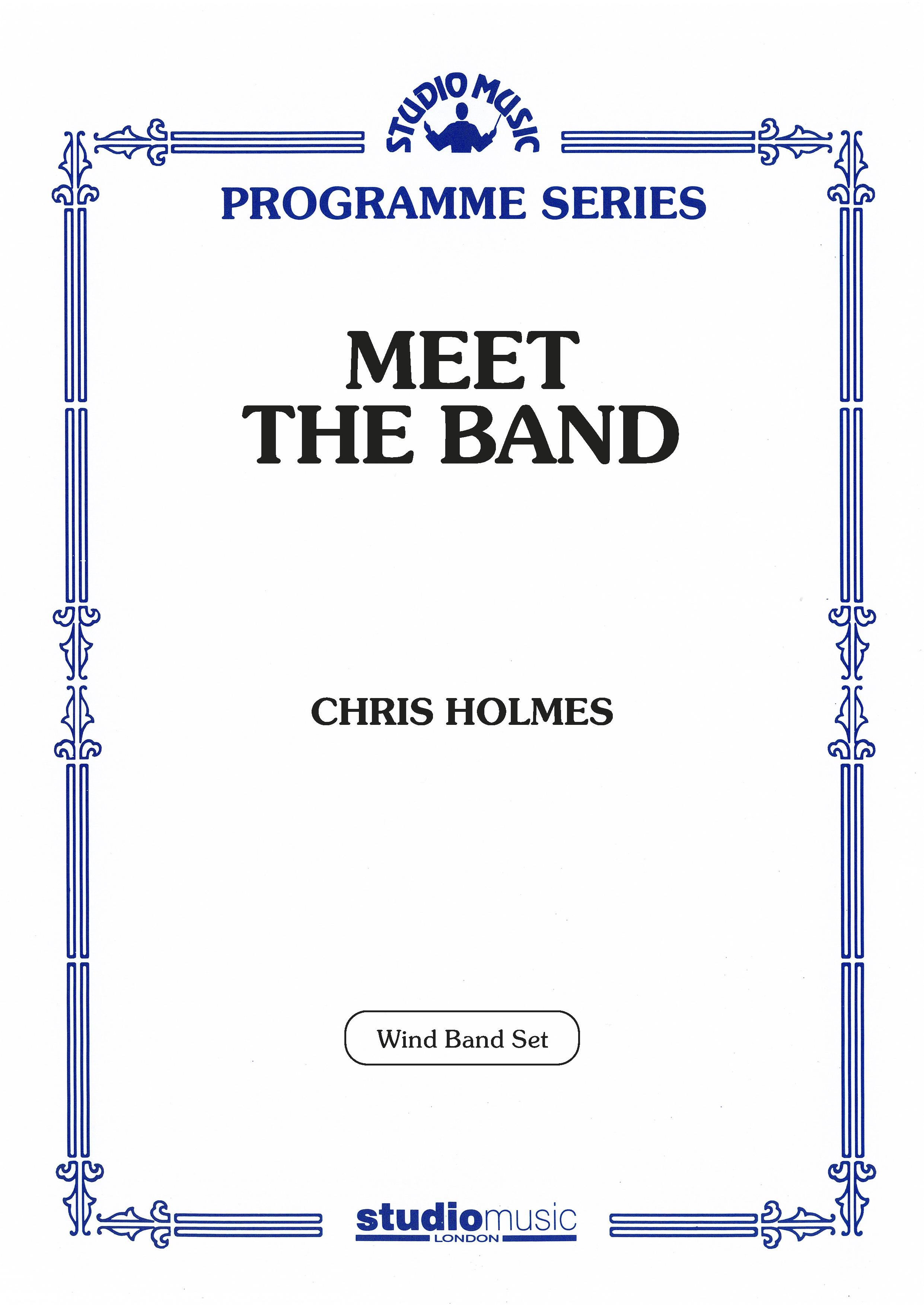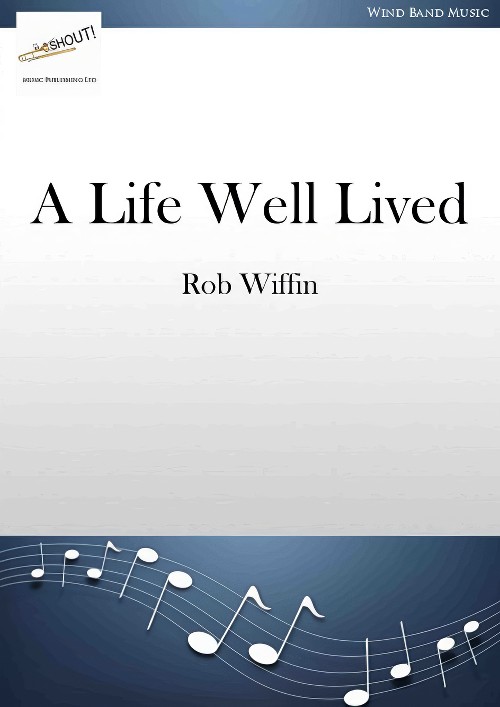Results
-
 £82.50
£82.50Thunder and Blazes - Julius Fucik
Ladies and Gentlemen, boys and girls; "Hang on to your seats" with this new and exciting rendition of one of the greatest circus marches of all time! With this setting for young band, your ensemble will be able to take this well known classic from the "Big Top," and generate the same excitement as "The Greatest Show on Earth!" With limited ranges and simplified rhythms, your band will sound great and can really fly on the tempo! A crowd favorite that all audience members will recognize, Thunder and Blazes is sure to be a sure hit at your next concert!
Estimated dispatch 7-14 working days
-
 £53.95
£53.95All the Lords and Ladies - Roland Barrett
Depicting a medieval summer fair, All the Lords and Ladies by veteran band composer Roland Barrett evokes imagery of the villagers' stately processional as they slowly gather in the meadow for the annual celebration. An introduction with regal percussion and low winds, tuneful melodies, and solid scoring throughout make this an outstanding teaching piece for your students. (2:10) The PerformancePlus+ series is an innovative addition to the ever-expanding MakeMusic Cloud interactive library. These engaging selections are presented with educational resources designed to enrich the rehearsal process and create outstanding performances. Including: Assignment, recording, and assessment tools within MakeMusic Cloud Piece-specific exercises focused on skills and techniques Printable sheet music (with a standard MakeMusic Cloud subscription) Educational tips and suggestions to support learning Available in print and digital formats.
Estimated dispatch 7-14 working days
-
 £101.50
£101.50Scherzo: Cat and Mouse - Robert Spittal
The "cat and mouse chase" has been a part of folklore and popular culture since the time of pharaohs in ancient Egypt. Over the ages, the chase has served as a metaphor for the suspenseful and sometimes alternating relation between hunter and hunted. In the modern age, the story has been played out hundreds of times in popular animated cartoons, often accompanied by a musical score representing the energetic spirit of the chase with lively twists and turns, sudden surprises and tongue-in-cheek music. In this spirit of playfulness and suspense, Robert Spittal has created a marvelous work that is both entertaining and exhilarating.
Estimated dispatch 7-14 working days
-
 £95.95
£95.95A Little Night and Day Music - Samuel Adler
Commissioned by Carl Fischer for a school band series in the 1970s, A Little Night and Day Music is a classic of the modern band repertoire. The "Night Music" section is a study in color and atmosphere and makes striking use of contemporary instrumental techniques including clusters and aleatory. The second section ("Day Music") is a bright and brassy contrast, full offerive and an exhilarating momentum. (Only the first section of A Little Night and Day Music is included on the recording)
Estimated dispatch 7-14 working days
-
 £184.99
£184.99Concertino for Percussion and Band - Menno Bosgra
This three-part work was commissioned by Kunstfactor--the Dutch Institute for Amateur Art. Its purpose is to further the repertoire for solo percussionist and orchestral accompaniment--whether brass band, fanfare orchestra or wind band. For a good performance, the soloist should be well-versed in a variety of techniques, and should have a good understanding of the instruments not only technically, but also musically. In terms of the selection of instruments and also technique, the first and second movement are more classical in style, while the final movement--with a set-up of various so-called 'untuned' instruments--is more suited to contemporarysolo kit playing. These distinctions will become clear to the soloist while studying the piece. (Menno Bosgra)Movement One requires timpani and tambourine;Movement Two requires marimba and vibraphone;Movement Three is a set-up of: five untuned drums (bongos and toms), large drum (standing), large floor drum or smaller bass drum (lying down), cowbell on a stand, suspended cymbals, Chinese cymbal and small drum.
Estimated dispatch 7-14 working days
-
 £104.99
£104.99Prelude and Polonaise - Nikolai Rimsky-Korsakov
Nikolai Rimsky-Korsakov (1844-1908) composed his opera The Night before Christmas in 1894-95. The premiere took place on December 10 1895 in St. Petersburg. The libretto to the opera came from Rimsky-Korsakov himself and is based on a tale by Nikolai Gogol, which some years earlier had already served as operatic material for Pjotr Tchaikovsky. The opera tells the story of Vakula, the blacksmith of a small Ukranian village. He is madly in love with Oxana who demands - as proof of his love - a most unusual Christmas present: the magnificent slippers of the Empress. Knowing full well that, in normal circumstances, he would never be able to fulfil Oxana's wish, Vakula seekssupernatural assistance and finds it in the shape of the devil, who comes up with a ploy to help him. The devil carries him on his back to St. Petersburg, where during a lavish reception at court Vakula finds an opportunity to present his request to the empress. The Empress actually agrees to Vakula's wish and hands over her slippers to him. Thereupon he returns to his own village. Here, in the meantime, he had been given up for dead, and Oxana had been plunged into great sorrow as she had come to realise that she also truly loved Vakula. In the end, however, all misunderstandings are resolved and all adversities overcome: Oxana receives her extravagant present, the lovers are united, and the church bells call the villagers to the Christmas service.The vibrant Polonaise is played in the 3rd act of the opera at the entrance of the Empress, whose appearance is anticipated in the prelude by the fanfare motives. The music paints a vivid picture of the party atmosphere and the marvellous dcor at the imperial court of St. Petersburg, which Rimsky-Korsakov conjures up in his opera and which can also be played outside of the Advent and Christmas season, for example as an opening piece to any festive concert.
Estimated dispatch 7-14 working days
-
£67.50
Knights and Ladies - Mike Hannickel
Shining armor and the Knights of the Round Table! Beautiful, virtuous ladies and the Age of Chivalry are the images rendered in KNIGHTS AND LADIES, a new Grade 1 band piece inspired by Alfred Lord Tennyson's IDYLLS OF THE KING. An excellent vehicle for cross-curricular teaching, this easy piece for your first or second year band has a heroic theme and contrasting middle section in the shape of a mini-overture.It was a time of jousting and garlands; romance and intrigue; villains and valor! Experience the excitement of KNIGHTS AND LADIES with your band today!
Estimated dispatch 7-14 working days
-
 £149.99
£149.99Moses and Ramses - Satoshi Yagisawa
This piece was commissioned by Matsudo Citizen Wind Orchestra for their 30th anniversary concert and premired by the band conducted by Kenichiro Hasunuma in July 2009. This piece is typical of Satoshi Yagisawa in that it depicts a magnificent spectacle. This one is set in ancient Egypt and is based on the story depicted in the famous film "The Ten Commandments" (1956, directed by Cecil B. DeMille). One day Moses, who was raised by the rich royal family, found out that he was originally Hebrew. The Hebrews had been forced to live as slaves. Ramses, the prince directly descended from the Pharaoh, envied Moses' strength and popularity. After internal argument Moses decides todeliver the Hebrew from the Pharaoh's tyranny and escape from Egypt with them.The music starts with brilliant royal fanfare and depicts magnificent architecture, the Hebrew people forced into hard labour, and the slaves escaping from the Pharaoh's tyranny. At the climax they are at crisis point, trapped by the sea. Moses waves his staff and the miracle happens; the sea parts and Hebrew people successfully escape. Following on from Perseus - A Hero's Quest in the Heavens, this work Moses and Ramses is another piece written in the dramatic style favoured by Satoshi Yagisawa.
Estimated dispatch 7-14 working days
-
 £87.95
£87.95Meet the Band (Concert Band - Score and Parts) - Holmes, Chris
Meet the Band was composed in August 2023 and is written to showcase and contrast, in varying styles, the sound and textures of the different instrument groups in a Concert Band.It was first performed in April 2024 by Salisbury Concert Band, conducted by the composer.Includes:The High WoodwindsThe Low Woodwinds and SaxophonesHorns, Trumpets and Tenor TrombonesLow Brass and Percussion (and Finale)
Estimated dispatch 7-14 working days
-
 £49.95
£49.95A Life Well Lived (Concert Band - Score and Parts) - Wiffin, Rob
A Life well lived was commissioned by the Morrish family in 2023 on the death of Ian Morrish. It is dedicated to them with the inscription in loving memory of Ian.I knew Ian from early days at Southall Citadel Salvation Army Corps and then our paths crossed again briefly when I joined the Central Band of the Royal Air Force. Ian had been a euphonium player in the band for many years and was about to leave to take up a teaching post in Surrey. He was always very involved in choral music, conducting choirs throughout his life. I therefore wanted to keep this piece song-like and actually started with the song which appears from letter D to the end, which can always be performed on its own. From there I used the rising octaves that introduce the song to form the beginning of the work, with the feeling in the back of my head of a river starting to flow. There is nothing referential in the more dramatic sections towards the beginning, but every life has its dramas and I wanted something to give some balance to the tranquil nature of much of the piece. In the middle of the work I use a little motif taken from a song I remember Ian singing in his floating tenor voice. I develop the motif a little as an accompaniment to a new line which has, for me, a sense of purpose and directness and has an oblique reference to the RAF March Past. This builds to the aforementioned song and from there the music flows with its highs and lows to its peaceful conclusion.- Rob WiffinDuration: 3.30
Estimated dispatch 7-14 working days
